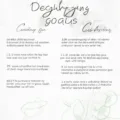The Emotional Weight of Too Much Stuff
In today’s consumer-driven world, many of us find ourselves drowning in a sea of possessions. The accumulation of “too much stuff” has become a common struggle, impacting our mental health, relationships, and overall well-being. This article explores the emotional toll of clutter and offers compassionate strategies for lightening your load, both physically and mentally.
Understanding the Psychology Behind Accumulation
Before we can address the issue of too much stuff, it’s important to understand why we tend to accumulate things in the first place. Often, our possessions are tied to emotional needs or past experiences:
- Security: Having abundant resources can make us feel safe and prepared.
- Identity: Our belongings can be an extension of who we are or aspire to be.
- Memories: Objects often serve as tangible links to cherished moments or loved ones.
- Fear of lack: Scarcity mindsets can drive us to hold onto things “just in case.”
Recognizing these underlying motivations is the first step towards a more mindful approach to our possessions.
The Impact of Clutter on Well-being
While accumulating possessions might provide temporary comfort, excessive clutter can have significant negative effects on our mental and emotional health:
- Increased stress and anxiety
- Difficulty focusing and decreased productivity
- Feelings of shame or embarrassment about one’s living space
- Strained relationships due to disagreements over stuff
- Financial strain from unnecessary purchases and storage costs
By addressing the issue of too much stuff, we open the door to improved well-being and a more balanced life.
Compassionate Decluttering: A Gentle Approach
When faced with overwhelming clutter, it’s easy to feel discouraged or judgmental towards ourselves. However, a compassionate approach to decluttering can make the process more manageable and emotionally rewarding:
- Practice self-kindness: Acknowledge that accumulating stuff is a common human experience and avoid harsh self-criticism.
- Start small: Begin with a single drawer or shelf to build confidence and momentum.
- Focus on gratitude: As you sort through items, express thankfulness for what they’ve brought to your life, even if it’s time to let them go.
- Honor your emotions: Allow yourself to feel any sadness or anxiety that arises, recognizing these feelings as part of the process.
- Celebrate progress: Acknowledge each step forward, no matter how small it may seem.
Creating Space for What Truly Matters
As you begin to release excess possessions, you’ll likely notice a shift in your priorities and values. This newfound space – both physical and mental – allows for greater focus on what truly brings joy and meaning to your life:
- Stronger relationships and quality time with loved ones
- Pursuit of personal passions and hobbies
- Improved self-care and health practices
- Increased generosity and community involvement
- Greater appreciation for experiences over material possessions
By letting go of excess stuff, we make room for the things that truly enrich our lives and contribute to our overall well-being.
Maintaining a Balanced Relationship with Possessions
Once you’ve decluttered, it’s important to develop strategies for maintaining a healthier relationship with your possessions moving forward:
- Practice mindful consumption: Before making a purchase, pause to consider whether the item aligns with your values and truly adds value to your life.
- Implement a one-in-one-out rule: For every new item that enters your home, commit to releasing something else.
- Regularly reassess: Schedule periodic “check-ins” with your belongings to ensure they still serve a purpose in your life.
- Focus on experiences: Shift your spending towards activities and memories rather than material goods.
- Cultivate gratitude: Regularly express thankfulness for what you have, fostering contentment with your current possessions.
FAQ: Navigating the Journey of Letting Go
Q1: How do I start decluttering when I feel overwhelmed?
A1: Begin with a small, manageable area like a single drawer or shelf. Set a timer for 10-15 minutes and focus solely on that space. This approach helps build momentum without feeling overwhelmed.
Q2: What if I regret getting rid of something?
A2: It’s natural to have some doubts. Remember that the benefits of a clutter-free space often outweigh the occasional regret. If you’re unsure about an item, consider “quarantining” it in a box for a set period before making a final decision.
Q3: How can I declutter sentimental items without feeling guilty?
A3: Approach sentimental items with extra care and compassion. Consider keeping a few representative pieces that hold the most meaning, and find ways to honor memories without keeping every physical object (e.g., taking photos or writing down associated stories).
Q4: What if my partner or family members aren’t on board with decluttering?
A4: Open communication is key. Share your reasons for wanting to declutter and listen to their concerns. Start by focusing on your own belongings and shared spaces, leading by example. Respect others’ boundaries and work together to find compromises.
Q5: How can I maintain a clutter-free space long-term?
A5: Develop daily habits like the “one-minute rule” (if a task takes less than a minute, do it immediately) and regular “reset” sessions for different areas of your home. Continually reassess your relationship with possessions and practice mindful consumption to prevent future accumulation.
Remember, the journey of decluttering and maintaining a balanced relationship with our possessions is ongoing. Be patient and kind to yourself as you navigate this process, celebrating each step towards a more intentional and fulfilling life with less stuff.









